copper - red metal
Copper is a chemical element in the periodic table that has the symbol Cu (Latin: cuprum) and atomic number 29. It is a ductile metal with excellent electrical conductivity, and finds extensive use as an electrical conductor, heat conductor, as a building material, and as a component of various alloys.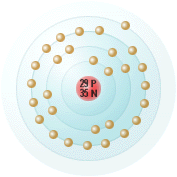
![]() Click on this link to see more details about Copper symbols .
Click on this link to see more details about Copper symbols .
Location in the periodic table
Copper occupies the same family of the periodic table as silver and gold, since they each have one s-orbital electron on top of a filled electron shell. This similarity in electron structure makes them similar in many characteristics. All have very high thermal and electrical conductivity, and all are malleable metals.
Isotopes
There are two stable isotopes, 63Cu and 65Cu, along with a couple dozen radioisotopes. The vast majority of radioisotopes have half lives on the order of minutes or less; the longest lived, 67Cu, has a half life of 61.8 hours.
![]() Click on this link to see more details about Advantages of copper tubes.
Click on this link to see more details about Advantages of copper tubes.
Alloys
Numerous copper alloys exist, many with important historical and contemporary uses. Speculum metal and bronze are alloys of copper and tin. Brass is an alloy of copper and zinc. Monel metal, also called cupronickel, is an alloy of copper and nickel. While the metal "bronze" usually refers to copper-tin alloys, it also is a generic term for any alloy of copper, such as aluminium bronze, silicon bronze, and manganese bronze.
Brasses and Bronzes are probably the most well-known families of copper-base alloys. Brasses are mainly copper and zinc. Bronzes are mainly copper along with alloying elements such as tin, aluminum, silicon or beryllium.
![]() Click on this link to see more details about Brass and bronze
Click on this link to see more details about Brass and bronze
Mining history
There are many plentiful materials on this planet. Early humans used stone, wood, and any natural fibers that 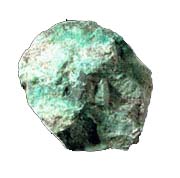 were available. Useful, implements could be made of these naturally occurring materials. With the discovery of fire, metals could be extracted from special rocks and forged into implements. Copper was certainly one of these earliest materials used and may have been around since 8000 B.C. Copper can be used for making tools, weapons, cooking utensils and decorations. Some 5800 years ago bronze, an alloy of copper and tin, was invented. During this same time the first extraction of gold and silver from the rocks was also developed.
were available. Useful, implements could be made of these naturally occurring materials. With the discovery of fire, metals could be extracted from special rocks and forged into implements. Copper was certainly one of these earliest materials used and may have been around since 8000 B.C. Copper can be used for making tools, weapons, cooking utensils and decorations. Some 5800 years ago bronze, an alloy of copper and tin, was invented. During this same time the first extraction of gold and silver from the rocks was also developed.
![]() Click on this link to see more details about copper ore
Click on this link to see more details about copper ore
Copper and the copper alloys are some of the most versatile materials available and are used for applications in every type of industry with world consumption of exceeding 14 million tonnes per annum. Besides good conductivity the properties include strength, hardness, ductility, resistance to corrosion, wear and  shock, low magnetic permeability, an attractive range of colors together with ease of machining, forming, polishing and plating. Over the years a number of materials have been developed giving combinations of these properties that are optimum for a very wide variety of applications.
shock, low magnetic permeability, an attractive range of colors together with ease of machining, forming, polishing and plating. Over the years a number of materials have been developed giving combinations of these properties that are optimum for a very wide variety of applications.
Brasses and Bronzes are probably the most well-known families of copper-base alloys. Brasses are mainly copper and zinc. Bronzes are mainly copper along with alloying elements such as tin, aluminum, silicon or beryllium.
![]() Click on this link to see more details about Copper-containing minerals
Click on this link to see more details about Copper-containing minerals
 Sixty Centuries of Copper Since primitive man first discovered copper, the red metal has constantly served the advancement of civilization. Copper is man's oldest metal, dating back more than 10,000 years. A copper pendant discovered in what is now northern Iraq goes back to about 8700 B.C. Archaeologists probing ancient ruins have discovered that this enduring metal was a great boon to many peoples. Copper probably first came into use as the earliest non-precious metal employed by the Sumerians and Chaldeans of Mesopotamia, after they had established their thriving cities of Sumer and Accad, Ur, al'Ubaid and others, somewhere between 5,000 and 6,000 years ago. These early peoples developed considerable skill in fabricating copper and from these centers the rudiments of craftsmanship spread to the river-dwelling people of Egypt, where it continued to flourish for thousands of years long after their own civilization had degenerated.
Sixty Centuries of Copper Since primitive man first discovered copper, the red metal has constantly served the advancement of civilization. Copper is man's oldest metal, dating back more than 10,000 years. A copper pendant discovered in what is now northern Iraq goes back to about 8700 B.C. Archaeologists probing ancient ruins have discovered that this enduring metal was a great boon to many peoples. Copper probably first came into use as the earliest non-precious metal employed by the Sumerians and Chaldeans of Mesopotamia, after they had established their thriving cities of Sumer and Accad, Ur, al'Ubaid and others, somewhere between 5,000 and 6,000 years ago. These early peoples developed considerable skill in fabricating copper and from these centers the rudiments of craftsmanship spread to the river-dwelling people of Egypt, where it continued to flourish for thousands of years long after their own civilization had degenerated.
![]() Click on this link to see more details about copper history
Click on this link to see more details about copper history
Interesting facts from around the world
|
* Water supply systems of the Great Pyramid (Cheops’ Pyramid) is constructed partly of copper tubes (over 4500 years ago). Now we sells copper tubes to our customers in Egypt. *The twin pillars that once stood before the porch of Solomon's Temple at Jerusalem were of bronze. They were about 3 in. thick, 6 ft in diameter, and more than 26 ft high.
|
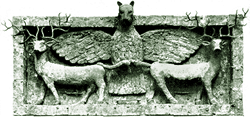 |
| Copper-relief found at Al'Ubaid, near Ur, dating from about 3100 B.C. Known as the Imdugud Relief, it is entirely of copper and shows a lion-headed eagle holding two stags by their tails. http://www.copper.org |
 * One of the Seven Wonders of the Ancient World, the celebrated Colossus at Rhodes, was the largest of many colossal statues of the Sun-god upon the island; it stood 105 ft high and consisted entirely of bronze. It was made by Chares of Lindus, one of the most famous bronze sculptors of antiquity, and took twelve years to manufacture and erect (292 to 280 B.C.).
* One of the Seven Wonders of the Ancient World, the celebrated Colossus at Rhodes, was the largest of many colossal statues of the Sun-god upon the island; it stood 105 ft high and consisted entirely of bronze. It was made by Chares of Lindus, one of the most famous bronze sculptors of antiquity, and took twelve years to manufacture and erect (292 to 280 B.C.).
*The Romans had copper alloy horns and bronze trumpets called buccinas. The latter were mainly military instruments and had only one or two notes, like most of the other trumpets of that period.
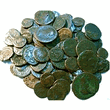 *Copper tubes were used in the time of the Roman Empire. Even nowadays it is possible to see the remnants of copper water supply systems in the archeological site in Herculaneum (that was destroyed after eruption of Vesuvius in 79 A.C.).
*Copper tubes were used in the time of the Roman Empire. Even nowadays it is possible to see the remnants of copper water supply systems in the archeological site in Herculaneum (that was destroyed after eruption of Vesuvius in 79 A.C.).
*One of the famous Dead Sea Scrolls found in Israel is made of copper instead of more fragile animal skins. The scroll contains no biblical passages or religious writings - only clues to a still undiscovered treasure.
* Copper tubes were used in the Mid 19 th century in English breweries. Since then they are more and more used for water supply installations all over Western Europe instead of lead ones.
* Of all materials used by the man, copper is given a special priority since it influenced the development of civilization to the utmost. It is used for conveyance of water and gas, conduction of heat and electricity, and in various telecommunication systems...Even one age of human civilization - the Copper Age - was named after it. 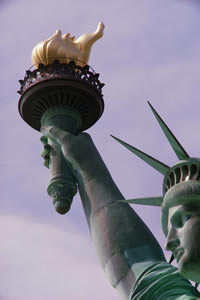
* The Statue of Liberty in the United States is coated with 80 tons of copper.
*The U.S. nickel is actually 75% copper. The dime, quarter, and half dollar coins contain 91.67% copper and the Susan B. Anthony dollar is comprised of 87.5% copper.
*Ten thousand years ago, cave dwellers used copper axes as weapons and tools for survival. Today, high tech surgeons save lives and precious blood by using copper-clad scalpels. The copper conducts an electric current that heats the scalpel to make it self-cauterizing.
*184,000 tones of copper were used for the first production of the eight new Euro coins.
![]() Click on this link to see more details about copper facts
Click on this link to see more details about copper facts
Sources: http://www.copper.org
http://www.unr.edu
In our offer we have:
● Copper tubes for LPG vehicles ![]()
Click on the links above to see more product details.
If you need any further information, don't hesitate to contact us.
For information for sizes and prices please email us at info@copper-tubes.net
or telephone us on +381(0)11 3970 300
 sitemap
sitemap
Search
eng rus ger pol ita ned swe jpn srb cro esp chi por kor hun fra
Product range
- Copper tubes and pipes:
-
 Soft copper tubes
Soft copper tubes -
 Half-hard copper tubes
Half-hard copper tubes -
 Hard copper tubes
Hard copper tubes -
 PVC coated copper tubes
PVC coated copper tubes
-
 Copper pipes for LPG
Copper pipes for LPG -
 Tubes for refrigeration and AC
Tubes for refrigeration and AC Tubes for plumbing
Tubes for plumbing -
 Capillary tubes
Capillary tubes -
 Conductors, cables and wire
Conductors, cables and wire -
 Enamelled copper wire
Enamelled copper wire -
 Copper bars, rods and plates
Copper bars, rods and plates Brass and bronze bars and tubes
Brass and bronze bars and tubes -
 Copper strips and sheets
Copper strips and sheets -
 Copper, bronze, brass ingots
Copper, bronze, brass ingots -
 Trolley wire
Trolley wire -
 Copper fittings (pdf)
Copper fittings (pdf) -
 Contact details
Contact details -
 Careers
Careers
Other products:
Interesting facts
-
 Tables of standards
Tables of standards -
 Copper through history
Copper through history -
 Application of copper tubes
Application of copper tubes -
 Advantages of copper tubes
Advantages of copper tubes -
 Copper ore
Copper ore -
 Brass and bronze
Brass and bronze -
 Copper-containing minerals
Copper-containing minerals -
 Copper facts
Copper facts -
 Symbols of copper
Symbols of copper -
 Copper coins
Copper coins -
 The Baghdad Battery
The Baghdad Battery -
 Links
Links